Canon Digital IXUS 100 IS Review
Canon Digital IXUS 100 IS
Can a digital camera be too ultra-compact?
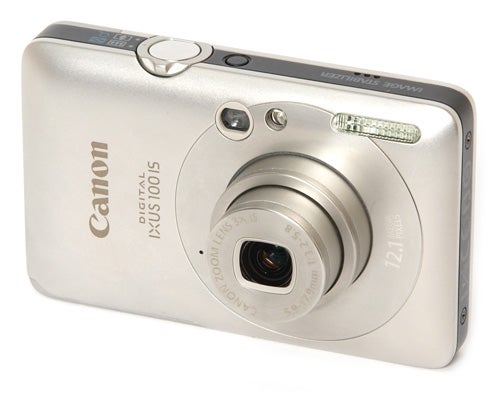
Verdict
Key Specifications
- Review Price: £180.00
Just a couple of years ago almost every camera I reviewed would be yet another tiny 3x zoom ultra-compact. All the manufacturers (except for Ricoh) were doing it, and in some cases most of their range would be variations on the same 3x zoom theme. Thankfully these days we have a lot more choice, with pocket-sized compact cameras featuring long-zoom wide-angle lenses becoming ever more popular. Now 3x zoom ultra-compacts are the exception rather than the rule, so it’s slightly surprising that Canon’s latest IXUS compact is re-treading old ground.
The Digital IXUS 100 IS in an ultra-compact camera featuring the same 12.1-megapixel 1/2.3-inch CCD sensor, the same DIGIC 4 processor, and the same 1280 x 720 HD 30fps video recording mode as the IXUS 110 IS and the IXUS 990 IS which I reviewed a couple of months ago. The 100 IS manages to cram these features into a body measuring just 87 x 54.5 x 18.4mm and weighing approximately 135g loaded. Where the 110 IS and 990 IS have 4x and 5x zoom lenses respectively, the 100 IS has a very small 3x zoom lens. The more vocal traditionalists on our comments section will no doubt rejoice that it also has a proper optical viewfinder as well.
Although 3x zoom ultra-compacts are less common now there are still a few about, and some very good ones too. The IXUS 100 IS will be competing with the Casio EX-S12, which offers a similar specification in an even slimmer package but without the optical IS for around £140. Other possible contenders include the new Samsung ST50 (£130), and of course the Pentax Optio M85 (£130).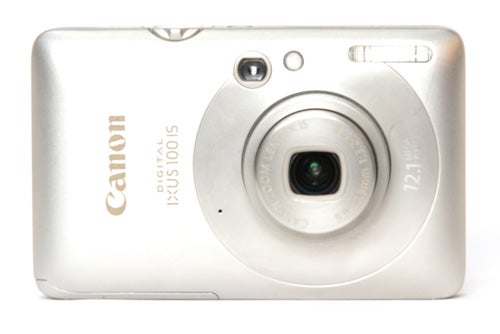
One glance is enough to tell you that the IXUS 100 IS is designed to serve as much as as a fashion accessory as a camera. It’s a nice looking thing, with an all-aluminium body that could only be described as sleek. It’s available in a range of colours, including black, metallic red, bronze and the anodised silver finish shown here, and the build quality is well up to Canon’s usual high standard. It’s not all roses though, because the battery-card hatch is rather flimsy, and I’m also not too impressed by the plastic pop-off cover concealing the HDMI and A/V Out sockets. It’s positioned on the back of the camera, right under the users thumb, and is held on only by the snap-fit of two plastic lugs and a thin plastic tether. It feels flimsy and vulnerable, and exactly like the sort of thing that will get accidentally broken and lost.
Canon has in the past made some questionable design decisions in the IXUS range, sometimes putting aesthetics above handling and ease of use on the list of design priorities. One noteworthy example was the IXUS 970 IS, which was a technically brilliant camera with the handling characteristics of a wet bar of soap. Unfortunately the IXUS 100 IS has also gone some way down this path. The body certainly looks very sexy, but its rounded shape and tiny dimensions make it very awkward to hold, while the stylish flush-mounted buttons are impossible to operate by touch and have very poor tactile feedback.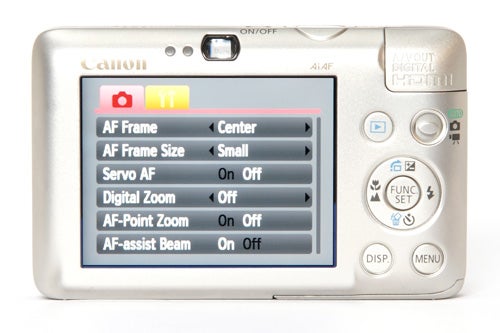
Whenever I review a new compact camera, there will usually be someone in the comments section who will complain about how modern cameras never have optical viewfinders, before going on to remark about how that rock’n’roll music is too loud and you damn kids get off my lawn. While a good optical viewfinder is certainly a big advantage for any serious photography, the emphasis there should be on the word “good”. The IXUS 100 IS has an optical viewfinder, no doubt in an effort to appease the traditionalists, but to be honest it looks like a token gesture. The viewfinder is ridiculously tiny, only covers about 75 percent of the frame and suffers from pretty drastic optical distortion. It’s far too small to use while wearing glasses, and of course has no dioptric correction.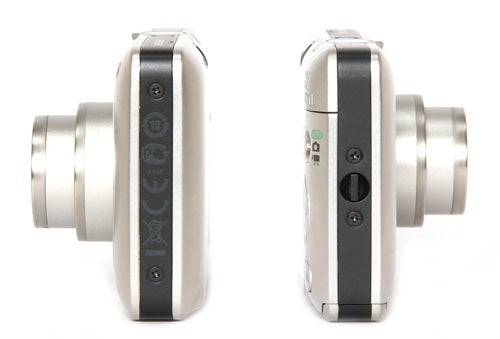
The IXUS 100 IS has basically the same range of features as the other current models in the IXUS range. It has optical image stabilisation, which while not really essential on a camera of this type is still a welcome bonus. The control interface is Canon’s usual quick function menu system for main shooting options, with a simple and easy-to-use main menu system. Like most new compact cameras it can shoot HD video, in 1280 x 720 resolution at 30 fps with mono audio via a built-in microphone. Optical zoom cannot be used while recording, but can be pre-adjusted before you begin. Video playback on a digital TV is possible via the HDMI socket.
Performance is always a Canon strong suit, and the IXUS 100 IS is no exception. It starts up very quickly in just over a second, and shuts down again in just over two seconds. In single shot mode it has a shot-to-shot cycle time of 2.2 seconds, which is good but not exceptional, while in continuous shooting mode it can maintain one frame a second, which is also about average for a modern compact camera.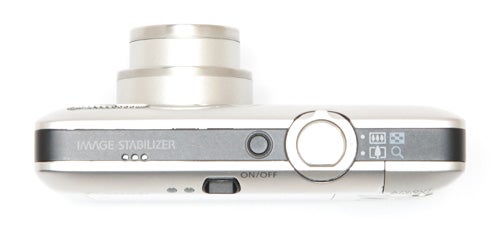
The autofocus system also appears to be the same as the IXUS 110 and 990, with a choice of either face-detection and tracking in AiAF mode, or simple centre-point AF with two zone sizes. The AF is nice and quick, but I’ve seen quicker, including the Casio EX-S12. As usual the AiAF system works very well, apart from occasionally when it decides to focus on some random element in the background of a scene rather than the largest or closest subject.
As you might expect from a camera pretty much purpose-built for social snapshot photography, low light performance is excellent. The AF is just as fast in low light, and thanks to a good AF assist lamp it will work in total darkness at a range of several metres. The flash is also surprisingly powerful for its size, easily surpassing its stated maximum range of 3.5 metres.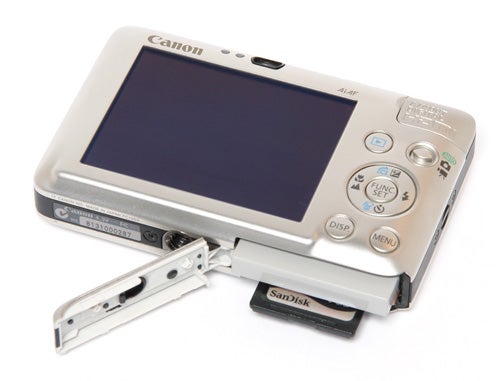
Image quality is of a very high standard, although not without its faults. Noise control is good, but no better than most other premium 12MP cameras. It produces good image quality at 400 ISO and usable pictures at 800 ISO. Canon has sensibly capped the maximum sensitivity at 1600 ISO rather than including a useless 3200 ISO setting for the sake of it as many manufacturers do.
The only real problem with image quality is a persistent tendency to over-expose by about half a stop, which unfortunately tend to result in rather washed-out colours. Dynamic range is also a bit limited, although the intelligent contrast control helps to preserve some shadow detail.
”’Verdict”’
The Canon IXUS 100 IS is almost a novelty now, a 3x zoom ultra-compact when all around are wide-angle long-zooms. It’s a nice looking camera with excellent build quality and a good range of features. Performance is good, especially in low light, and the image quality is also generally very good. However the awkward handling and almost pointless tiny viewfinder limit its appeal.
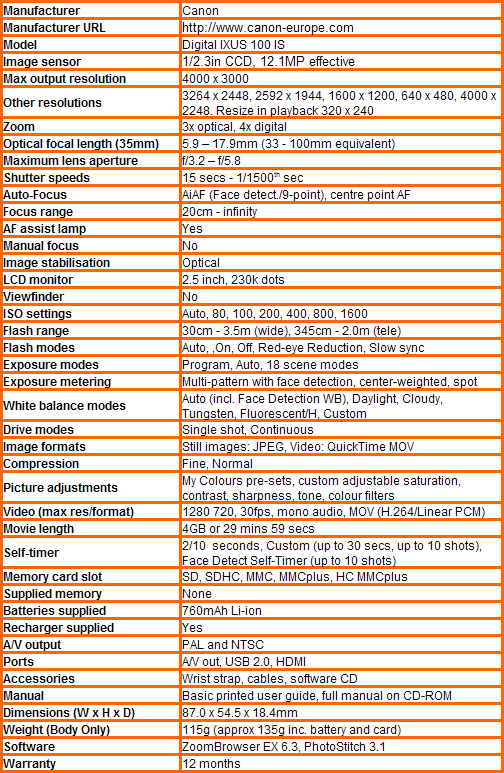
”Over the next few pages we show a range of test shots. On this page the full size image at the minimum and maximum ISO settings have been reduced to let you see the full image, and a series of full resolution crops have taken from original images at a range of ISO settings to show the overall image quality. These pictures were taken indoors using tungsten light.”
—-
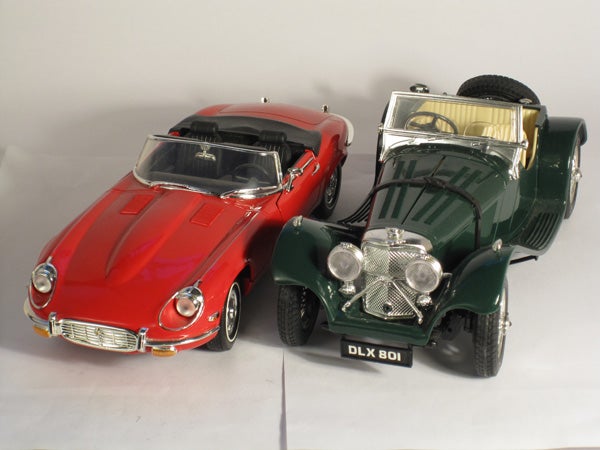
This is the full frame at 80 ISO.
—-
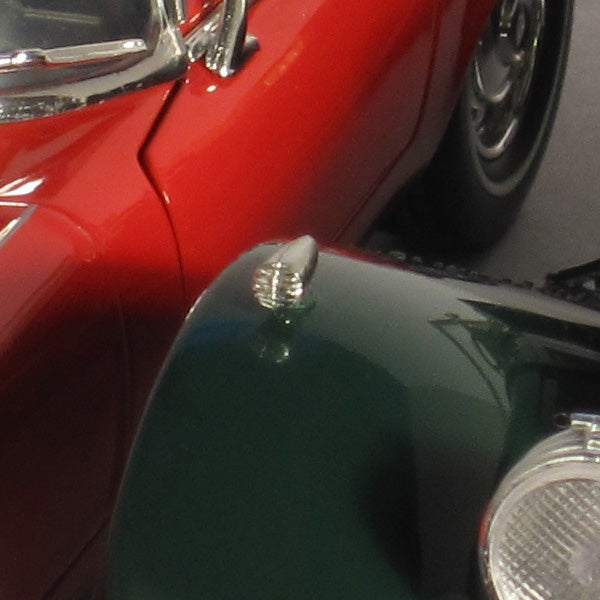
At the minimum sensitivity setting the image quality is excellent.
—-
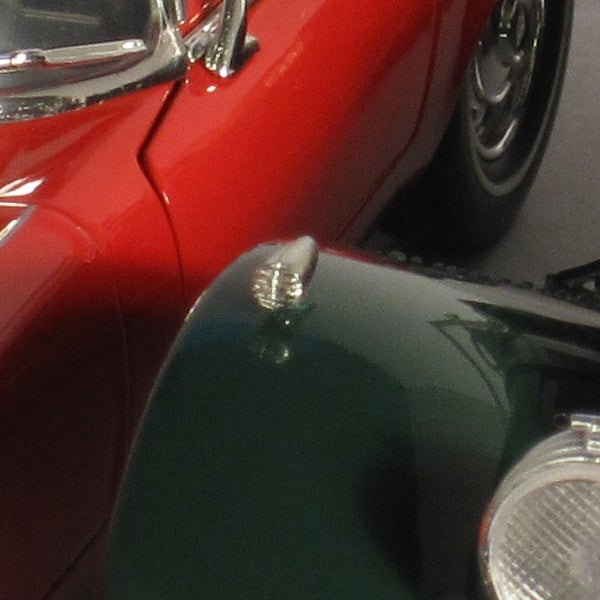
There’s no real difference at 100 ISO.
—-
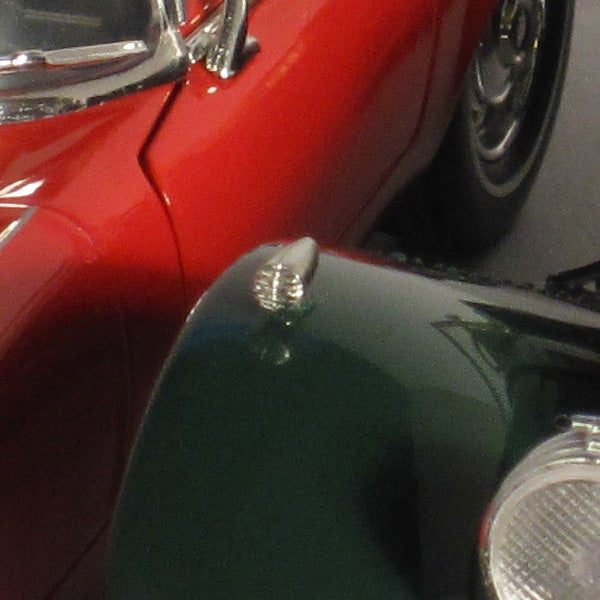
Still no noise problems at 200 ISO.
—-
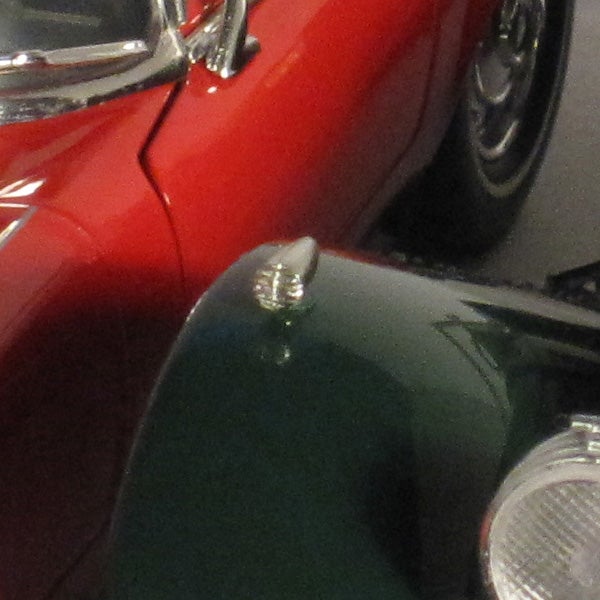
Noise is starting to show at 400 ISO, but the image quality is still good.
—-
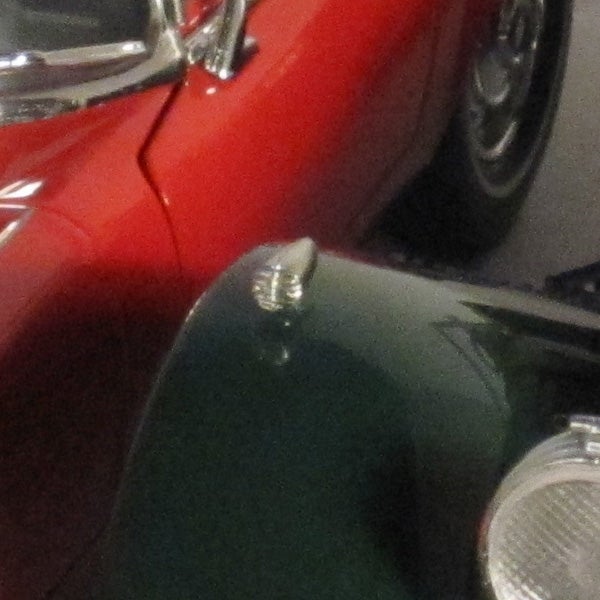
More noise at 800 ISO, and some loss of detail, but the tonal gradients are still quite smooth.
—-
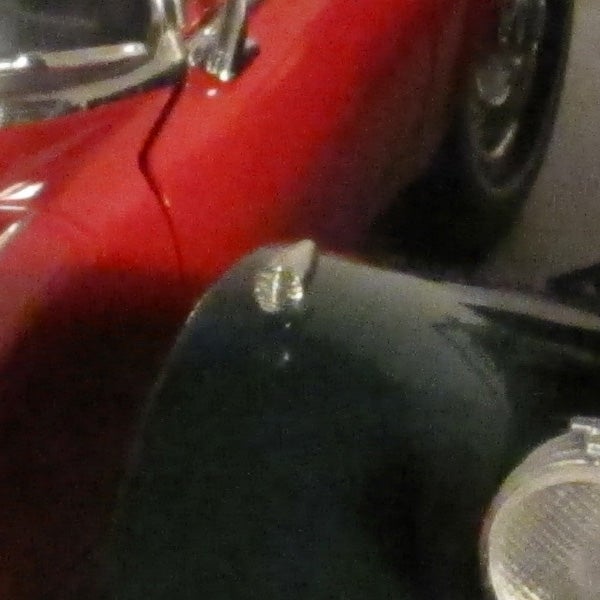
Canon has wisely limited the IXUS 100 IS to 1600 ISO, and you can see why.
—-
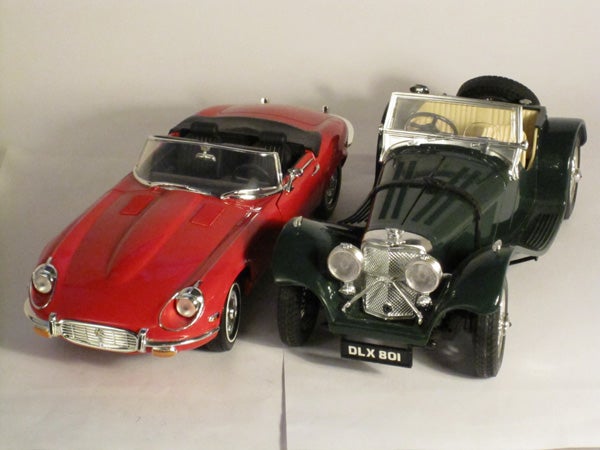
This is the full frame at 1600 ISO.
—-
”A range of general test shots are shown over the next two pages. In some cases, the full size image has been reduced for bandwidth purposes, and a crop taken from the original full resolution image has been placed below it to show the overall image quality. Some other pictures may be clicked to view the original full-size image. ”
—-
(image:canonixus100detail)
Here’s the usual detail test shot of the West Window of Exeter Cathedral, for you to compare with other cameras. See below for a full res crop, or click to see the whole picture.
—-
(image:canonixus100detailcrop)
It’s interesting to compare the image quality with another 12MP ultra-compact, like the Casio EX-S12, as well as the Canon IXUS 110 IS
—-
(image:canonixus100distort)
The lens quality is good, although there may be some software distortion correction here.
—-
(image:canonixus100distcrop1)
Centre sharpness is excellent. Note that this was shot on auto at 400 ISO.
—-
(image:canonixus100distcrop2)
Corner sharpness isn’t so good, with some noticeable purple fringes
—-
”Here are some general test shots to help evaluate the camera’s overall image quality, including dynamic range, colour rendition and the zoom range of the lens. Some pictures may be clicked to download the full size original image. ”
—-
(image:canonixus100wide,canonixus100widefull)
The wide angle is equivalent to 33mm. Note the general over-exposure and burned-out highlights.
—-
(image:canonixus100tele,canonixus100telefull)
The telephoto end is equivalent to 100mm.
—-
(image:canonixus100contr1)
With i-Contrast turned off the shadows are black and featureless, but there is still good highlight detail.
—-
(image:canonixus100contr2)
With i-Contrast turned on there is a bit more detail in the shadow areas.
—-
(image:canonixus100colur)
The slight over-exposure has made the colours look a bit thin.
—-
(image:canonixus100seagill)
What do you call a man with a seagull on his head?
—-
(image:canonixus100tower)
The IXUS 100 IS is good for general snapshots.
—-
Trusted Score
Score in detail
-
Value 7
-
Image Quality 8
-
Build Quality 9
Features
| Camera type | Ultra Compact |
| Megapixels (Megapixel) | 6 Megapixel |
| Optical Zoom (Times) | 3x |
| Image Sensor | CCD |
| Image Stabilisation | Optical |
| LCD Monitor | 2.5 in |
| Flash modes | Auto Flash, Flash OFF, Flash ON, Red-eye Reduction |
| Video (max res/format) | 1280 x 720 |
| Memory card slot | Secure Digital High Capacity (SDHC) Card, MultiMediaCard (MMC), MMCplus, HC MMCplus |

